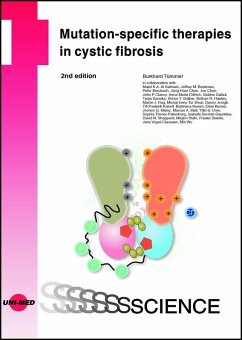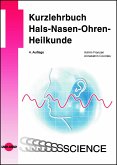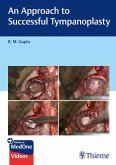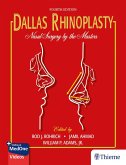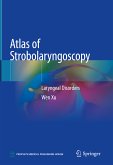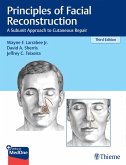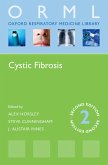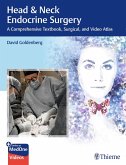Mutation-specific therapies in cystic fibrosis (eBook, PDF)


Alle Infos zum eBook verschenken

Mutation-specific therapies in cystic fibrosis (eBook, PDF)
- Format: PDF
- Merkliste
- Auf die Merkliste
- Bewerten Bewerten
- Teilen
- Produkt teilen
- Produkterinnerung
- Produkterinnerung

Hier können Sie sich einloggen

Bitte loggen Sie sich zunächst in Ihr Kundenkonto ein oder registrieren Sie sich bei bücher.de, um das eBook-Abo tolino select nutzen zu können.
Cystic fibrosis is a severe ion channel disease of autosomal recessive inheritance that is caused by mutations in the Cystic Fibrosis Transmembrane Conductance Regulator (CFTR) gene. Thanks to continuously improved symptomatic treatment during the last five decades this lethal paediatric disease has been transformed into a chronic disorder with a median life expectancy of nowadays more than 50 years. This 2nd edition provides the reader with the background and on-going preclinical and clinical research for the development of mutation-type specific therapy of cystic fibrosis. Starting with the…mehr
- Geräte: PC
- ohne Kopierschutz
- eBook Hilfe
- Größe: 3.32MB
![Kurzlehrbuch Hals-Nasen-Ohren-Heilkunde (eBook, PDF) Kurzlehrbuch Hals-Nasen-Ohren-Heilkunde (eBook, PDF)]() Achim FranzenKurzlehrbuch Hals-Nasen-Ohren-Heilkunde (eBook, PDF)39,80 €
Achim FranzenKurzlehrbuch Hals-Nasen-Ohren-Heilkunde (eBook, PDF)39,80 €![An Approach to Successful Tympanoplasty (eBook, PDF) An Approach to Successful Tympanoplasty (eBook, PDF)]() B. GuptaAn Approach to Successful Tympanoplasty (eBook, PDF)87,95 €
B. GuptaAn Approach to Successful Tympanoplasty (eBook, PDF)87,95 €![Dallas Rhinoplasty (eBook, PDF) Dallas Rhinoplasty (eBook, PDF)]() Rod J. RohrichDallas Rhinoplasty (eBook, PDF)255,95 €
Rod J. RohrichDallas Rhinoplasty (eBook, PDF)255,95 €![Atlas of Strobolaryngoscopy (eBook, PDF) Atlas of Strobolaryngoscopy (eBook, PDF)]() Wen XuAtlas of Strobolaryngoscopy (eBook, PDF)48,95 €
Wen XuAtlas of Strobolaryngoscopy (eBook, PDF)48,95 €![Principles of Facial Reconstruction (eBook, PDF) Principles of Facial Reconstruction (eBook, PDF)]() Wayne F. LarrabeePrinciples of Facial Reconstruction (eBook, PDF)138,95 €
Wayne F. LarrabeePrinciples of Facial Reconstruction (eBook, PDF)138,95 €![Cystic Fibrosis (eBook, PDF) Cystic Fibrosis (eBook, PDF)]() Cystic Fibrosis (eBook, PDF)23,95 €
Cystic Fibrosis (eBook, PDF)23,95 €![Head & Neck Endocrine Surgery (eBook, PDF) Head & Neck Endocrine Surgery (eBook, PDF)]() David GoldenbergHead & Neck Endocrine Surgery (eBook, PDF)182,95 €
David GoldenbergHead & Neck Endocrine Surgery (eBook, PDF)182,95 €-
-
-
Dieser Download kann aus rechtlichen Gründen nur mit Rechnungsadresse in A, B, BG, CY, CZ, D, DK, EW, E, FIN, F, GR, HR, H, IRL, I, LT, L, LR, M, NL, PL, P, R, S, SLO, SK ausgeliefert werden.
- Produktdetails
- Verlag: UNI-MED Verlag AG
- Seitenzahl: 129
- Erscheinungstermin: 13. Mai 2022
- Englisch
- ISBN-13: 9783837456301
- Artikelnr.: 64077980
- Verlag: UNI-MED Verlag AG
- Seitenzahl: 129
- Erscheinungstermin: 13. Mai 2022
- Englisch
- ISBN-13: 9783837456301
- Artikelnr.: 64077980
- Herstellerkennzeichnung Die Herstellerinformationen sind derzeit nicht verfügbar.
